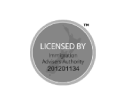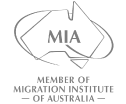For skilled professionals pursuing Australian migration, health requirements present a critical pathway—but pre-existing conditions need not derail your journey. Australia’s medical examination process balances public health protection with individualized assessments, where strategic preparation and transparent disclosure become your greatest assets. While conditions like diabetes, hypertension, or controlled mental health disorders may raise scrutiny, most applicants proceed successfully through tailored documentation and understanding waiver provisions [4]. This guide demystifies the process, empowering you to approach your health assessment with confidence.
Understanding the Assessment Framework
Australia’s health requirements serve three primary purposes:
- Public health protection: Preventing contagious diseases like tuberculosis [2]
- Healthcare cost management: Ensuring conditions won’t burden public services [2]
- Service accessibility: Evaluating impact on specialized resources (e.g., dialysis) [2]
The examination itself adapts to age and visa type:
| Age Group | Required Tests |
|---|---|
| Under 11 | Physical exam only |
| 11-15 | Exam + Urine test + Chest X-ray |
| 16+ | Exam + Urine + X-ray + HIV test (permanent visas) |
Strategic Preparation with Pre-existing Conditions
Documentation is paramount:
- Assemble 2 years of medical records, including specialist reports detailing:
- Current treatment protocols
- Stability metrics (e.g., HbA1c for diabetes)
- Future care plans
- Secure functional assessments for physical/mental conditions proving work capacity [4]
Pre-examination optimization:
- Schedule assessments during remission periods
- Stabilize chronic conditions 3-6 months pre-exam
- Avoid new medications shortly before testing
Navigating the Examination Process
During your appointment:
- Disclose proactively: Volunteer condition details before questioning [5]
- Contextualize limitations: Explain how managed conditions don’t impair daily function
- Request annotations: Ensure doctors document symptom control in notes [5]
High-frequency concerns and countermeasures:
- Cardiovascular: Stress tests showing cardiac capacity
- Mental health: Psychologist letters confirming stable functioning
- Autoimmune: Lab reports demonstrating controlled inflammation
Possible Outcomes and Pathways Forward
Successful clearance: Most well-managed conditions pass without issues if:
- Annual treatment costs remain under AUD$51,000 (current threshold) [4]
- No risk of service deprivation for Australians
When further review occurs:
- Additional testing: Specialized evaluations (e.g., cardiac stress tests)
- Health waiver petition: Required for permanent visas if costs exceed thresholds [4]
- Specialist submissions: Rheumatologists/endocrinologists can override initial concerns
Waiver success factors:
- Evidence of private health coverage
- Employer-sponsored care agreements
- Independent medical opinions contradicting initial assessments [4]
Case Studies: Realistic Precedent Examples
Hypertension management:
- Situation: 45-year-old engineer with 10-year history
- Strategy: Presented 3 years of stabilized BP logs, cardiologist prognosis
- Outcome: Cleared without waiver
Controlled type 2 diabetes:
- Situation: IT professional with insulin dependency
- Strategy: HbA1c records under 7%, endocrinologist letter, private health insurance
- Outcome: Granted visa after supplementary review [3]
Mitigating Measures for Complex Cases
When waivers become essential:
- Documented job offers with private healthcare provisions
- Regional employer nominations (prioritized in processing)
- Financial bonds for potential treatment costs
Appealing unfavorable decisions:
- Request immigration medical review within 28 days
- Submit new evidence contradicting cost projections
- Engage migration agents specializing in health cases [4]
Proactive Steps During Visa Planning
Pre-application strategies:
- Pre-migration health check: Identify potential red flags 12+ months ahead
- Specialist networks: Connect with Australian doctors in your field
- Financial buffers: Demonstrate capacity for private treatment
Critical timing considerations:
- Schedule exams after achieving clinical stability
- Avoid assessments during acute illness episodes
- Align with visa processing deadlines
Australia’s immigration health policy ultimately seeks balance—protecting public resources while welcoming skilled talent. With meticulous preparation, transparent communication, and specialist engagement, most pre-existing conditions become manageable steps in your migration journey rather than obstructions. Always prioritize early disclosure and expert guidance to navigate this process effectively.










